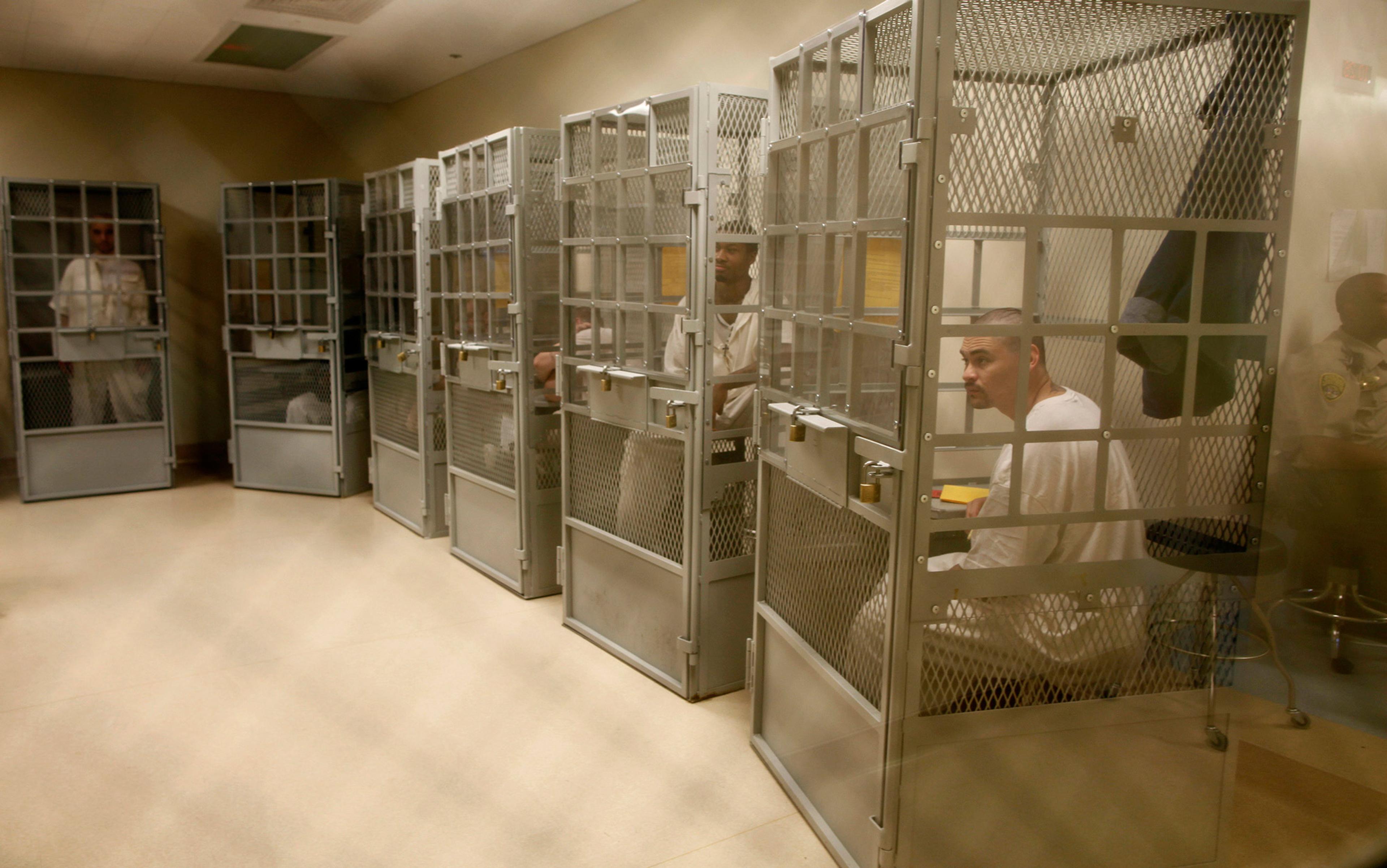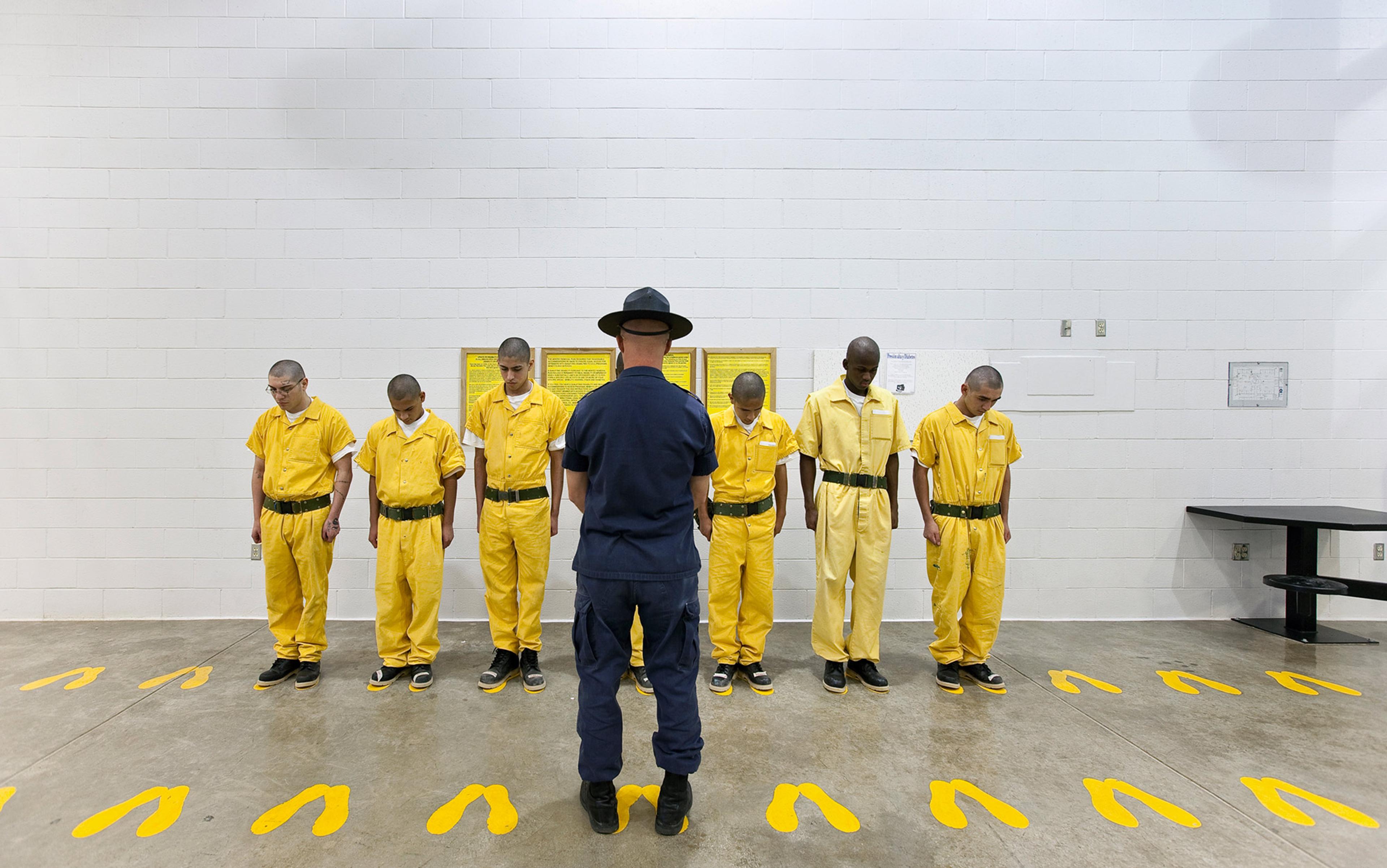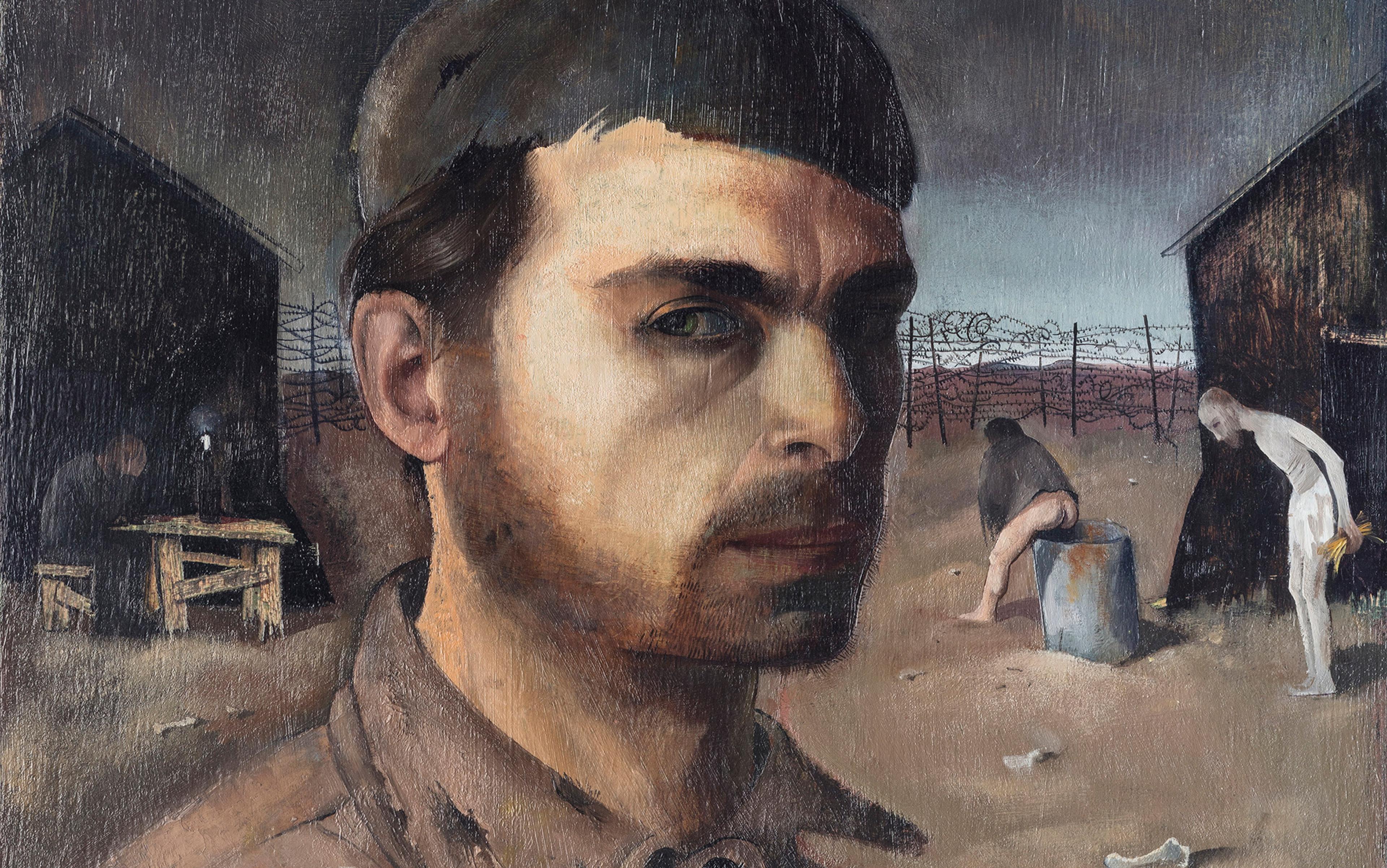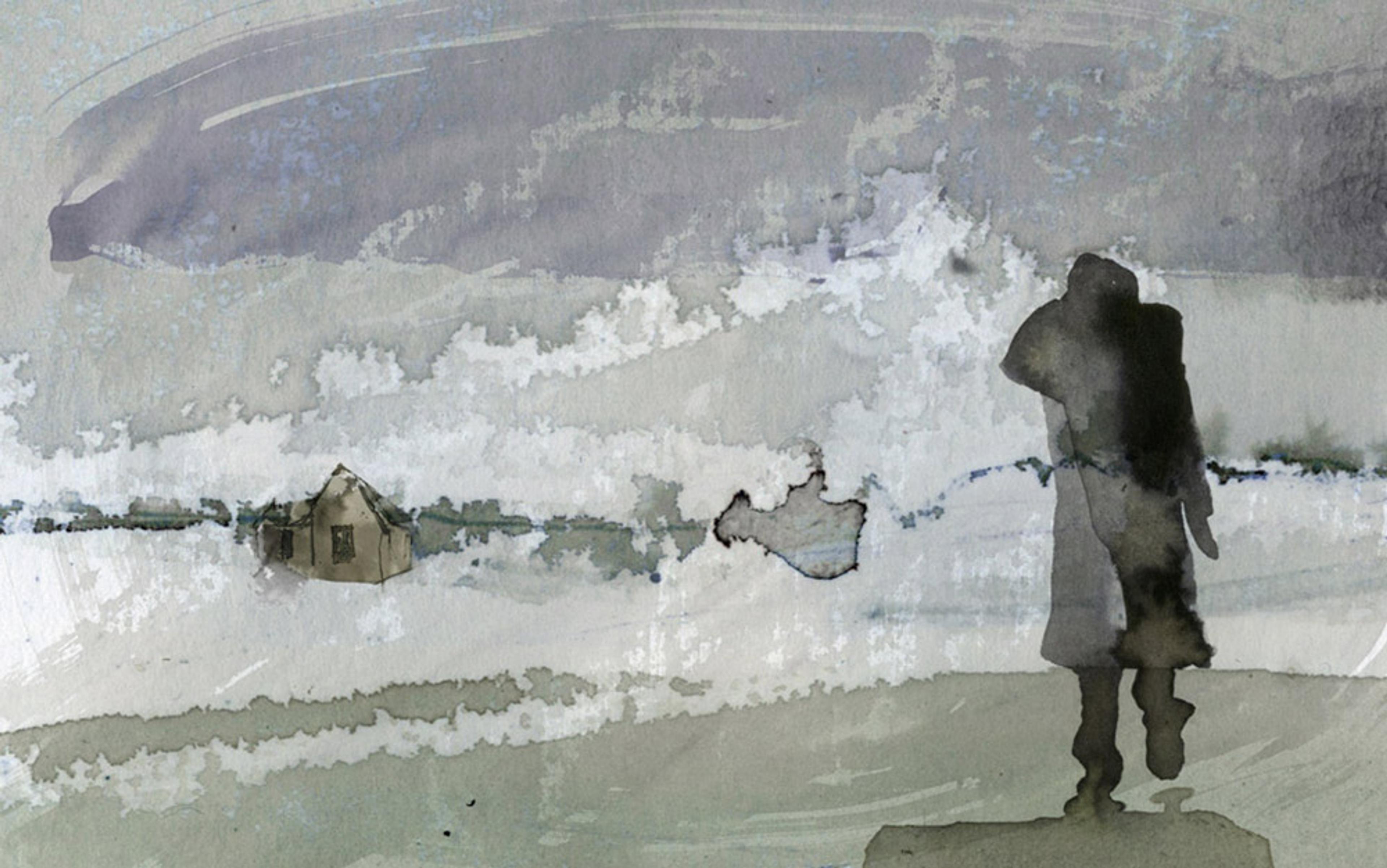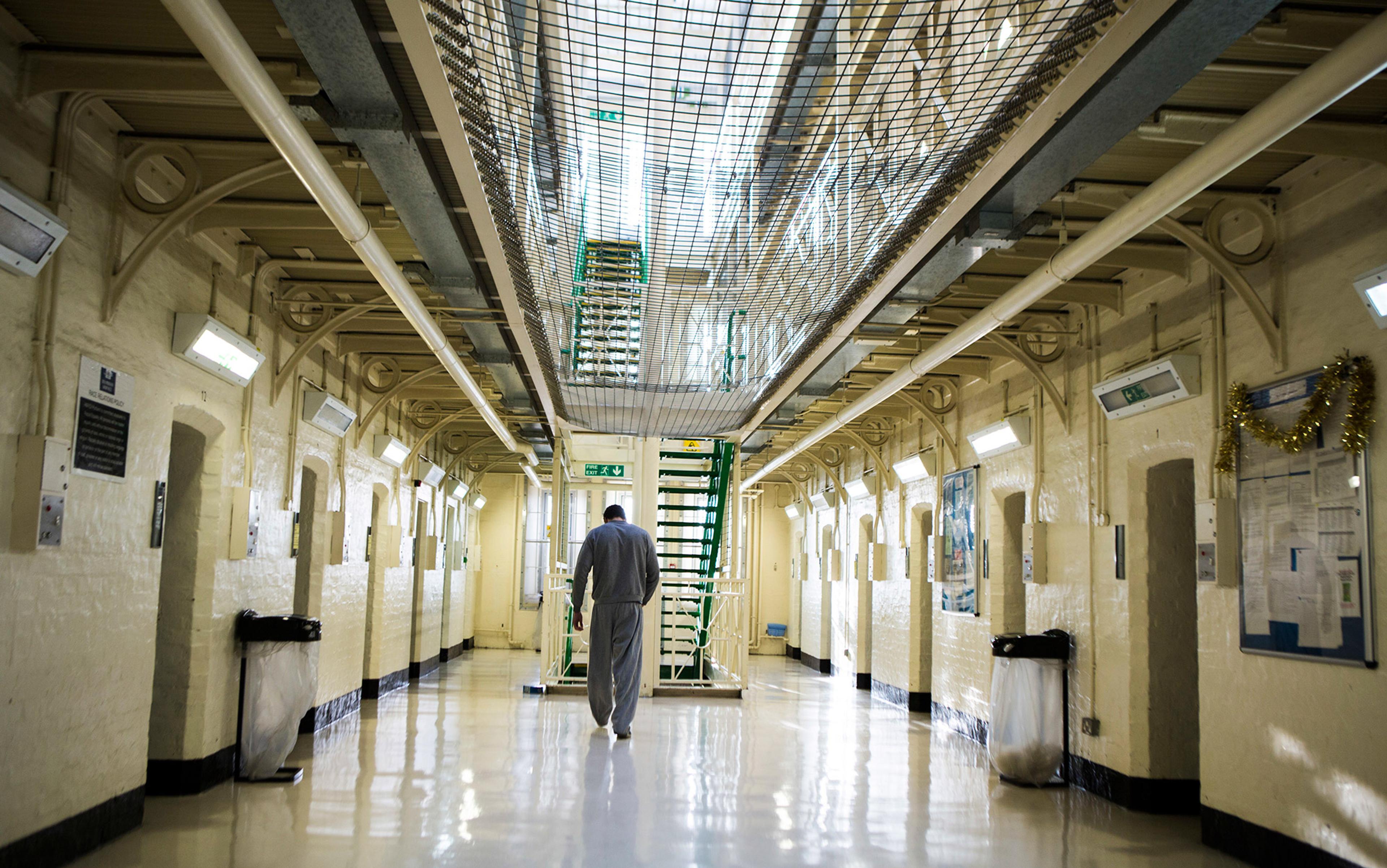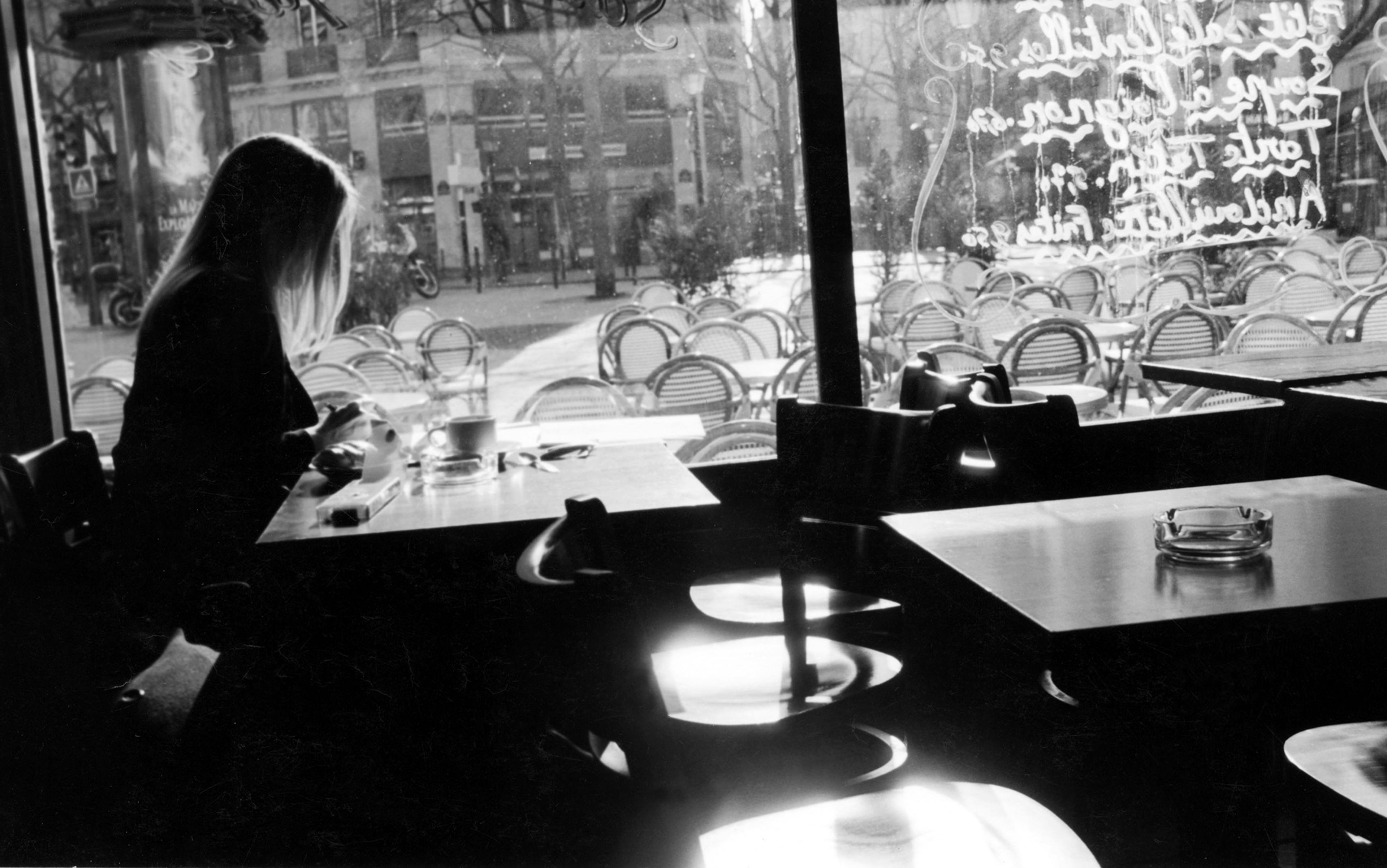I first met Five Omar Mualimm-ak at a forum on solitary confinement in New York City. He wore track shoes with his tailored suit. ‘As long as the Prison Industrial Complex keeps running, so will I,’ he explained. After hearing him speak about the connections between racism, poverty, mass incarceration and police violence, I invited Five to speak at a conference I was organising in Nashville, Tennessee. He arrived, as always, in a suit and track shoes. As we walked across campus to a conference reception, I worked up the courage to ask him how he got his name. He told me: ‘I spent five years in solitary confinement, and when I came out I was a different person.’
In an article for The Guardian last October, Five described his isolation as a process of sensory and existential annihilation:
After only a short time in solitary, I felt all of my senses begin to diminish. There was nothing to see but grey walls. In New York’s so-called special housing units, or SHUs, most cells have solid steel doors, and many do not have windows. You cannot even tape up pictures or photographs; they must be kept in an envelope. To fight the blankness, I counted bricks and measured the walls. I stared obsessively at the bolts on the door to my cell.
There was nothing to hear except empty, echoing voices from other parts of the prison. I was so lonely that I hallucinated words coming out of the wind. They sounded like whispers. Sometimes, I smelled the paint on the wall, but more often, I just smelled myself, revolted by my own scent.
There was no touch. My food was pushed through a slot. Doors were activated by buzzers, even the one that led to a literal cage directly outside of my cell for one hour per day of ‘recreation’.
Even time had no meaning in the SHU. The lights were kept on for 24 hours. I often found myself wondering if an event I was recollecting had happened that morning or days before. I talked to myself. I began to get scared that the guards would come in and kill me and leave me hanging in the cell. Who would know if something happened to me? Just as I was invisible, so was the space I inhabited.
The very essence of life, I came to learn during those seemingly endless days, is human contact, and the affirmation of existence that comes with it. Losing that contact, you lose your sense of identity. You become nothing.
Five’s experience of solitary confinement is extreme, but it’s not atypical. His feeling of disconnection from the world, to the point of losing his capacity to make sense of his own identity and existence, raises philosophical questions about the relation between sense perception, sociality, and a meaningful life. Why does prolonged isolation typically corrode a prisoner’s ability to perceive the world and to sustain a meaningful connection with his own existence? The short answer to this question is that we are social beings who rely on our interactions with other people to make sense of things. But what does it mean to exist socially, and what is the precise connection between our relations with others, our perception of the world, and the affirmation of our own existence?
My response to this question is shaped by the philosophical practice of phenomenology. Phenomenology begins with a description of lived experience and reflects on the structures that make this experience possible and meaningful. The main insight of phenomenology is that consciousness is relational. As the German philosopher Edmund Husserl put it at the turn of the 20th century, consciousness is consciousness of something; the mind is not a thing but a relation. Meaning is not ‘located’ in the brain like a message in a mailbox; rather, it emerges through an ever-changing relation between the act of thinking and the objects of thought.
Husserl’s student, Martin Heidegger, expanded this notion of relationality into an account of existence as Being-in-the-world. For Heidegger, it is not enough to reflect on the structures of consciousness in a theoretical way. We need to grasp how the meaning of our lived experience arises through a practical engagement with the world, in projects such as hammering a nail or baking a loaf of bread. For Heidegger, as for Husserl, we do not exist as isolated individuals whose basic properties and capacities remain the same in every situation. We are not in the world ‘as the water is “in” the glass or as the garment is “in” the cupboard’, he wrote in Being and Time (1927). Rather, we exist as Being-in-the-world, in a complex interrelation with the situation into which we have been thrown. The work of phenomenology is to make this web of relations visible, so that we can appreciate the complexity of even the most simple, everyday experiences.
Solitary confinement presents a challenge to my practice of phenomenology, both because I have not had this experience myself, and also because the testimony of survivors suggests that the experience of prolonged isolation is also an unravelling of experience: a deterioration of the senses, a becoming-invisible, an annihilation. If the task of phenomenology is to show how we make sense of the world through lived experience, then what should a phenomenologist make of prisoners’ accounts of a living death that no longer makes sense? Consider these excerpts from the prison journal of Shane Bauer, an American who was taken hostage in 2011 and spent 26 months in an Iranian prison, four of them in solitary confinement:
The more one is utterly alone, the more the mind comes to reflect the cell; it becomes blank static…
Solitary confinement is not some sort of cathartic horror of blazing nerves and searing skin and heads smashing blindly into walls and screaming. Those moments come, but they are not the essence of solitary. They are events that penetrate the essence. They are stones tossed into an abyss. They are not the abyss itself…
Solitary confinement is a living death. Death because it is the removal of nearly everything that characterises humanness, living because within it you are still you. The lights don’t turn out as in real death. Time isn’t erased as in sleep…
Upon returning to the US, Bauer visited Pelican Bay State Prison in California and was shocked by what he saw in his own country. More than 80,000 prisoners are held in some form of ‘restrictive housing’ (read: extreme isolation) in US prisons and jails. They spend up to 24 hours a day in a grey box with little or no contact with anyone but the guards whose job is to incapacitate them. The prisoners might enter the SHU with good hearing, 20/20 eyesight, and stable mental health, but the longer they remain in isolation, the greater the chance that their sensory awareness, cognitive clarity, and emotional stability will erode. This is because, as relational beings in an individualist society, a good deal of what we take to be our own, intrinsic properties and capacities are in fact social practices that rely for their coherence and vibrancy upon interactive feedback loops with other social beings in a shared situation.
Take, for example, the perception of a teapot. If I’m asked to describe my teapot while off-duty as a phenomenologist, I will probably start by listing its qualities: blue, ceramic, Japanese, and so forth. But as a phenomenologist, my task is not to describe the teapot as if it were a totally a separate entity from me, but rather to reflect on the way that the teapot appears to me. One of the first things I notice when I reflect in this way is that the teapot appears in profiles, one side at a time. It is impossible to see the entire teapot all at once; as I move to bring hidden sides into view, the previously visible sides become hidden.
The other people with whom I share space give me an objective location in the world – they anchor me somewhere
This observation might seem banal, but it’s crucial for understanding the feeling of unreality that many prisoners in solitary confinement describe. To perceive a teapot as such – as a three-dimensional object, rather than a constantly changing bundle of visible sides – I must supplement my actual, immediate sense impression of this side with a virtual, mediated anticipation or retention of the object’s hidden sides. I can do this on my own, but in a world shared with other people – or, more broadly, with other conscious beings – my experience of three-dimensional objects acquires another layer of significance and substance. All of the little ideas my mind has about the teapot, and the wider world, are confirmed by the interactions of others with it.
My body plays a special role in this triangulation of experience. My body is my central perspective on the world, the ‘here’ from which I encounter every ‘there’. In the words of the French phenomenologist Maurice Merleau-Ponty, my body ‘gears into’ the things that draw my attention; my toes feel for the edge of the last step, my hands dig into a backpack searching for my keys. And likewise, the world gears into my body, warming my face with sunshine or moving me to tuck my nose into my scarf. But the main thing that my body gears into is not a thing at all; it is the body of another person, another ‘here’, another starting-point for the experience of a world. My own sense of objective reality, and even my sense of myself as an objectively existing person rather than an abstract capacity for awareness, depends on the co-ordination of my here with your there, and vice versa.
When I sit across a table from you, for example, I implicitly perceive you as both ‘there’ in relation to my ‘here’ and as another ‘here’, with your own unsharable perspective on the world, in relation to which I too am ‘there’ for you. The other people with whom I share space both give me an objective location in the world – they anchor me somewhere, and they also hold open the virtual dimensions of my own experience by reminding me that, no matter how hard I try, I can never directly experience another person’s stream-of-consciousness. The other confirms, contests, enriches, and challenges my own experience and interpretation of things.
When we isolate a prisoner in solitary confinement, we deprive him of this network of perceptual and existential orientation. He might still have an experience of the table that is bolted in place in his cell, and he might still have the memory of what tables mean for other people. But the lived experience of these objects as both for-me and for-another is, by and large, denied to him. The ‘there’ that would otherwise anchor his experience of the world from ‘here’ has been pulled up, casting him adrift without a clear view of the horizon.
How do people cope with this loss? In her book Total Confinement (2004), Lorna Rhodes, professor of anthropology at the University of Washington, describes a scene she witnessed on her first visit to a Washington State supermax prison. A prisoner, Jamal Nelson, is in the solitary exercise yard, swinging his arms from side to side in widening circles until his knuckles start hitting the concrete walls. He continues to swing, splattering the concrete with blood, relentlessly marking the limits of the space allotted to him, as if oblivious to the pain and even to the walls themselves. What would drive someone to do this?
Recall Shane Bauer’s description of solitary confinement as an ‘abyss’. An abyss is a chasm without edges. It’s an emptiness that has become palpable and insistent, like a black hole that sucks everything into itself. As a phenomenologist, I would say that the abyss is an experience of space unhinged from the world and from the sense of an ‘elsewhere’ or ‘otherwise’. It is an experience of space without horizon, without the basic coordinates of ‘here’ and ‘there’ by which we orient ourselves in everyday life.
The prisoner who bashes his own body against the walls of a rec yard is both refusing and confirming the abyss of solitary confinement. The self-battering body makes a statement of sorts: these walls might confine me absolutely, but I absolutely refuse to be confined! There is a world out there – a ‘there’ to which my ‘here’ is correlated – and I will find it, even if I have to hurl myself against it, or destroy myself in the process. This kind of resistance might be self-defeating, but it remains an eloquent expression of the depth of emotional and ontological harm that prolonged solitary confinement can inflict on a person.
Some prisoners find other ways of coping with the exhaustion of spatial horizons. Robert King, who was convicted of robbery in 1969 and spent 29 years in solitary confinement in Louisiana, writes:
Some days I would pace up and down and from left to right for hours, counting to myself. I learned to know every inch of the cell. Maybe I looked crazy walking back and forth like some trapped animal, but I had no choice – I needed to feel in control of my space.
Like the act of bashing one’s body into walls, the habit of pacing both resists and reinscribes the limits of extreme isolation. But pacing develops a more sustainable coping mechanism, a way of feeling in control of your space even if you don’t have the power to change places. The prisoner who paces both refuses to sit still within his allotted space, and refuses to destroy his bodily integrity by bashing against the walls. He affirms himself as a living, moving being, even though the world has been diminished to the point where he is no longer able to live and move freely.
if our ‘here’ is intertwined with their ‘there’, it cannot help but affect our own capacities to see, hear, and make sense of our lives
Pacing does not express an acceptance of limits, but rather a nervous retracing of them, a habit formed around the impossibility of habituating oneself to what is an intolerable situation. In this sense, it is a way of coping, but even this coping mechanism is still a pathology that can become its own compulsive trap. Many prisoners find that their time in confined space and solitude expands the amount of personal space they need after they get released; at the same time, some retreat into a bathroom or closet when the pressures of life on the outside become too intense. It is as if their sense of personhood had expanded to fit the narrow constraints permitted to it, and even though the cell walls were a barrier to freedom and connection, they had adjusted to them, and maybe even identified with them in order to form a zone of comfort or safety. As Robert King told The Guardian in 2010: ‘I talk about my 29 years in solitary as if it was the past, but the truth is it never leaves you. In some ways I am still there.’
But if the phenomenologists are right, and a meaningful sense of one’s position in the world, or one’s ‘here’, is correlated to the ‘there’ of other embodied beings, then it’s not just the prisoner who is affected by solitary confinement. So too is the public’s capacity to see and hear the damage that is done in our name, for the sake of our own apparent safety. Solitary confinement is most clearly and immediately a form of violence against the experienced world of the prisoner. But if our ‘here’ is intertwined with their ‘there’, it cannot help but affect our own capacities to see, hear, and make sense of our lives.
On the outside, we are free to undervalue the role that our relationships with others play in supporting our own capacity to think and perceive. We can indulge in the myth of individual self-sufficiency, without having to live that myth. Only the prisoner in solitary confinement is forced to occupy the position of an isolated individual, and to bear the full weight of his existence alone, without the support of others, taking the blame for his own collapse should others prove unable or unwilling to do so. But as long as our own freedom is secured through the segregation of others, into concrete abysses – even, or especially, if these others remain invisible to us – it is a false sense of freedom, and it diminishes our own capacities for critical awareness.
As Ralph Waldo Emerson wrote in Nature: Addresses and Lectures (1849): ‘The health of the eye seems to demand a horizon. We are never tired, so long as we can see far enough.’ The practice of solitary confinement threatens to exhaust the world’s horizon; it turns space into an abyss and exposes the mind to blank static. But prisons are part of our world; like it or not, they are on our horizon. More than 80,000 Americans are being held in solitary confinement right now. Hundreds of thousands more are being held in similar conditions elsewhere. The health of our own eye demands that we see them.

